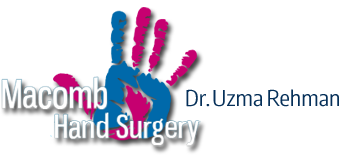Preventing & Treating Cheerleading Injuries (Part 1)
Tryouts are over and cheerleading season is in full swing! But if your child made the squad, you are probably equally excited, proud and worried about the potential for cheerleading injuries.
More than 3.5 million people in the United States are cheerleaders, from elementary school age to adults employed by professional athletic teams. And as the intensity of the competition has increased – so has the incidence of cheerleading injuries.
In fact, the U.S. Consumer Product Safety Commission (CPSC) reports that cheerleading injuries result in more than 15,000 emergency room visits every year. Cheerleading injuries account for more than half of all catastrophic injuries suffered by female athletes.
In the United States’ there are approximately 3 million female high school athletes. But while cheerleaders comprise only 3%, cheerleading injuries accounts for up to 65% of all trauma injuries in female high school athletes! The main source of cheerleading injury comes from “stunting” such as pyramids.
As experienced hand doctors, we often see some of the most common cheerleader injuries: broken or dislocated wrists, fingers, elbows & shoulders.
How to Prevent Cheerleading Injuries
1. Certified Coaches: The importance of a qualified cheerleading coach is of the utmost importance. Make sure your school’s coach has proper certification.
2. Conditioning: Resistance exercises that build strength in the lower back, stomach, and shoulders can help prevent cheerleading injury. Stretching, yoga, and/or pilates instruction can also improve flexibility that reduces muscle and ligament injury.
3. Training: Cheerleading stunts should never be attempted without proper training, and not until your child is confident and comfortable performing the feat. Make sure your child is comfortable saying “no” to any stunt that he or she feels exceeds their current abilities in a dangerous way.
4. Stunt Restrictions: Organizations such as STOP, the NCA, AACCA and the National Federation of State High School Associations (NFHS) have released new rules and recommendations to help reduce cheer injuries. These requirements include limits on inversions, height restrictions in human pyramids, higher thrower-flyer ratios, and the number of spotters required to be present for cheerleaders lifted above shoulder level.
5. Mats: Approved mats should be used at all times during practice sessions – and as much as possible during events and competitions.
6. Proper Rest: Cheerleaders should not be required or pressured to attempt stunts when they are tired, injured, or sick.
7. Avoiding Inclement Weather: While bad weather is unavoidable on Michigan football fields in the fall, avoiding high or complex stunts during rain, snow, wind or sub-freezing temperatures can help avoid injury from slips, drops and misses caused by the weather.
CLICK HERE for PART 2 of Preventing & Treating Cheerleader Injuries
Top Bloomfield Hills Hand Doctor
If your child is suffering from any cheerleading injury or pain in their fingers, wrist, elbow or arm, contact board certified Bloomfield Hills hand doctor, Dr. Rehman for a comprehensive evaluation and consultation. As with most medical conditions, early detection, awareness, and a prevention or treatment plan is the most effective way to combat the effects of cheerleading injuries.
Doctor Rehman will assess your individual situation, and prescribe the treatments that are best for your child’s condition – to ensure that they can get back to cheerleading as quickly as possible, without any longterm or permanent effects.

